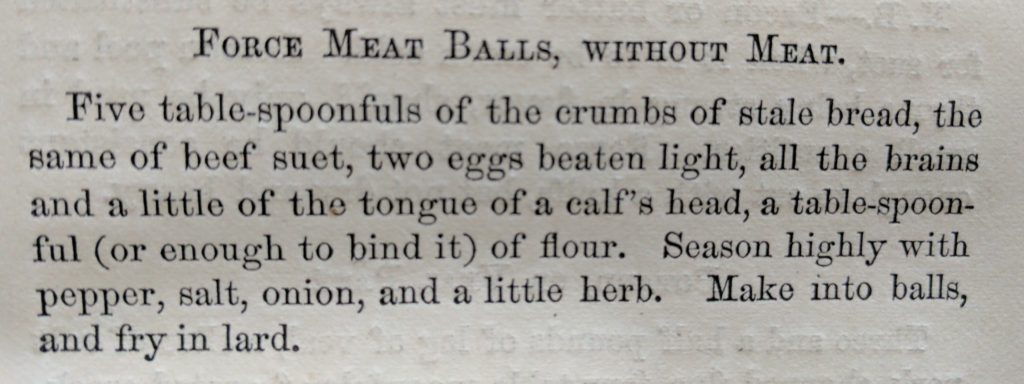Is it possible to cook vegetarian historic dishes? Absolutely. Depending on the era, it can be quite easy.
For 16th century and earlier Europe, there were a lot of meatless days, at least one a week. And on those days, meatless meant no animal products of any kind. So meatless recipes of that era are actually vegan. This means a lot of recipes using almond milk and vegetable broths.
For 18th century and later? Well, that gets more challenging. After the protestant reformation, it seems like there was an outright backlash against the old rules, and people became unabashed meat-eaters. And even when the recipe says it’s meatless, you’d best read it to be sure.

The above is from “Fifty Years in a Maryland Kitchen”[1], and I don’t know about you, but my vegetarian friends would be pretty horrified at this being called “without meat.”
So as far as 19th century goes, have some care. I’ve seen a couple of 19th century vegetarian cook books, but they are uncommon. And while vegetarian dishes exist in my regular 19th century books, recipes you could define as vegan are very uncommon. Milk, cream, butter and eggs are heavily used in vegetable dishes.